Overview
Organizations
- HOME
- >
- Recent events
013
Yokomizu Lab. (energy control engineering) has developing a small size circuit protection device which enable to interrupt a high voltage and a large fault current.
Our laboratory has been working with Pacific Engineering Corporation on a small DC fuse, aiming to interrupt a large fault current (few thousands ampere) caused in a circuit of EV. We using a polymer material and SiO2 powder as a DC arc extinction medium. Our new method enables the fuse to increase an arc resistance and interrupt the arc in a shorter time. This method can be realized by a change in a chemical composition of the arc and a physical interaction between the arc and the extinction medium.
Details are here
Details are here

012
Fujii Lab. (Dept. Information and Communication Engineering) has developed a technique of efficiently acquiring 3-D visual information
Fujii Lab. (Dept. Information and Communication Engineering) has developed a technology of efficiently acquiring 3-D visual information. We used a camera where specially-designed code-patterns were inserted at the aperture plane. Our technology enables us to computationally obtain 3-D visual information (as a set of multi-view images) from only two images acquired by this camera. This result was achieved through the joint optimization on the code-patterns and computational algorithm using deep learning.
Details are here
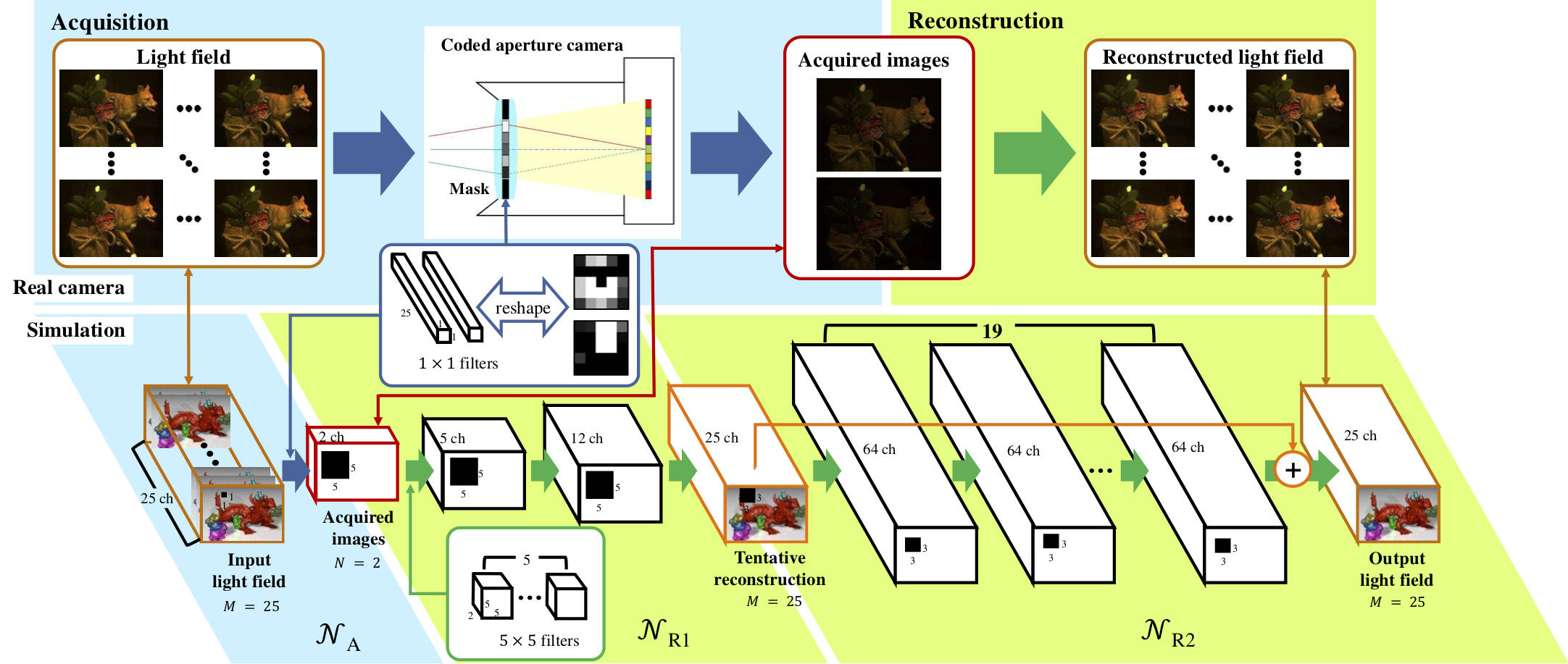
Our neural network models the entire pipeline from capture to computational reconstruction of 3-D visual information
011
An atmospheric pressure plasma for high-speed large-area treatment is newly developed.
An atmospheric pressure microwave plasma with meter-scale length for large-area high-speed treatment is successfully developed by control of microwave propagation.
Details are here

Meter-scale-length atmospheric-pressure microwave plasma
010
Project of all-solid-state lithium secondary battery
Research and development of innovative rechargeable batteries exceed lithium-ion batteries are indispensable for the commercialization of electric vehicles. Our laboratory participates in NEDO project and conducts research on all-solid-state lithium secondary batteries. In particular, research on graphite negative electrodes for all-solid-state lithium secondary batteries using sulfide-based inorganic solid electrolytes is going.
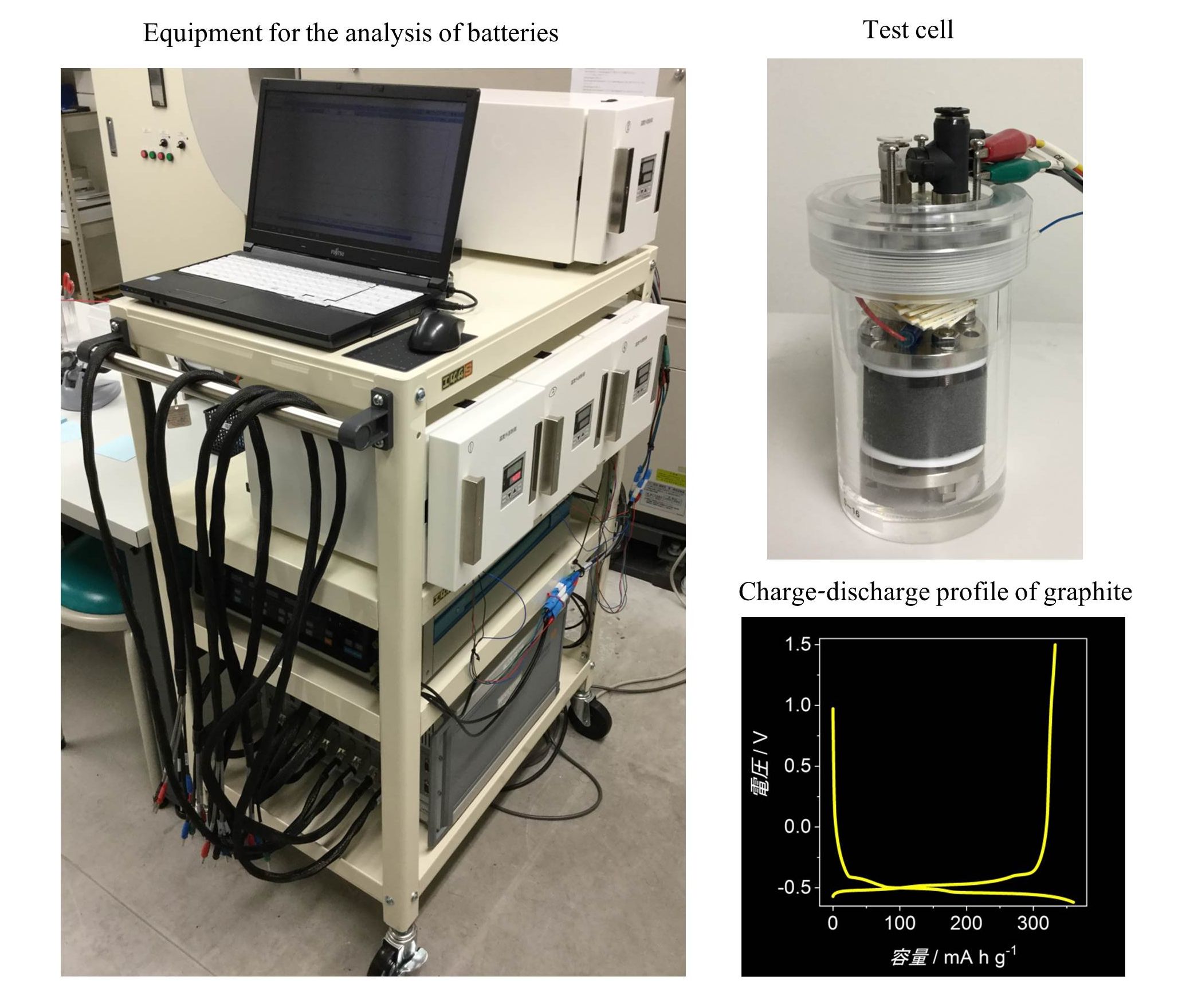
009
Realization of a liquid-crystalline structure of magnetic vortices
Magnetic vortices -skyrmions- show the arrays analogous to atomic arrays of solid states. The researchers of Nano-Electronic Materials Laboratory has found a liquid-crystalline structure of skyrmions, using Lorentz transmission electron microscopy. This finding may provide a new avenue for next-generation spintronics devices.
Details are here
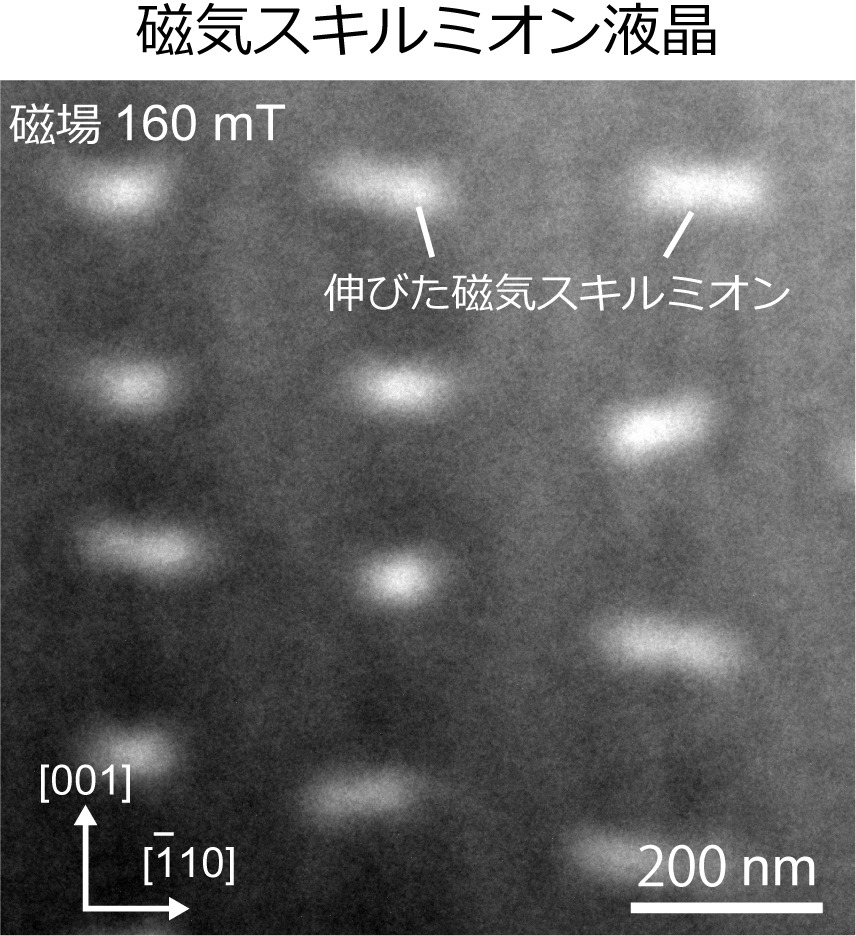
008
Research on information security and cryptography
Tetsu Iwata's research group and partners including NEC identified serious security vulnerabilities in the ISO/IEC standard authenticated encryption OCB2. Given the results, ISO/IEC announced the removal of OCB2 from the international standard. The paper describing the vulnerabilities and also proposes ways to fix the issues was presented at CRYPTO 2019, and received the Best Paper award. This work gives useful insight to design secure and efficient authenticated encryption schemes.
Details are here

Overview of the plaintext recovery attack
Announcement of ISO/IEC to remove OCB2 from ISO/IEC19772:2009-02
007
Establishment of the center for Low-temperature Plasma Sciences (cLPS)
Ceremony, commemorative lectures and facility tour to commemorate the establishment of the center for Low-temperature Plasma Sciences (cLPS) were held on July 23 were held on July 23, 2019. Over 550 participants from universities, reserch institutes, and companies were attended.
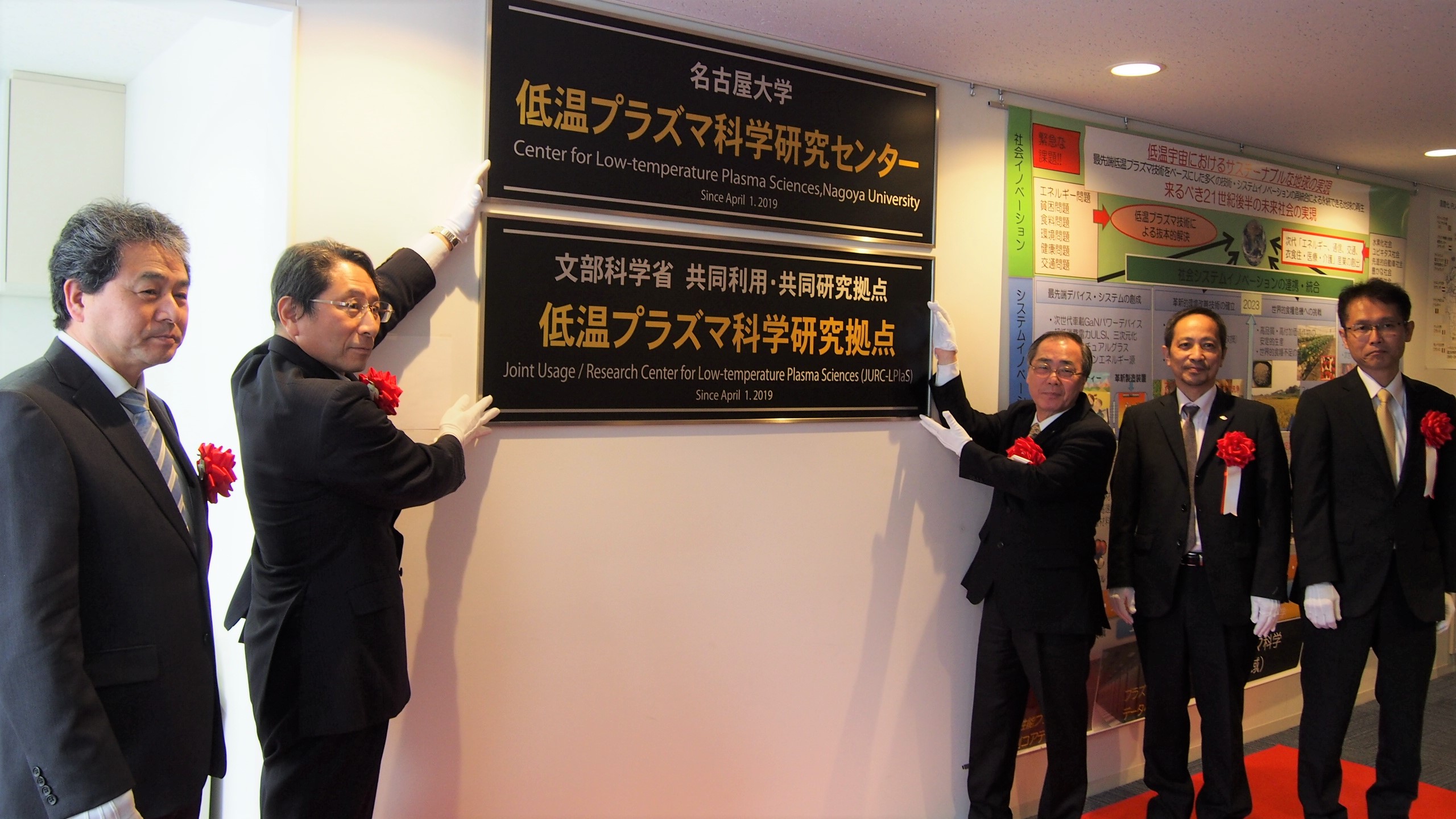
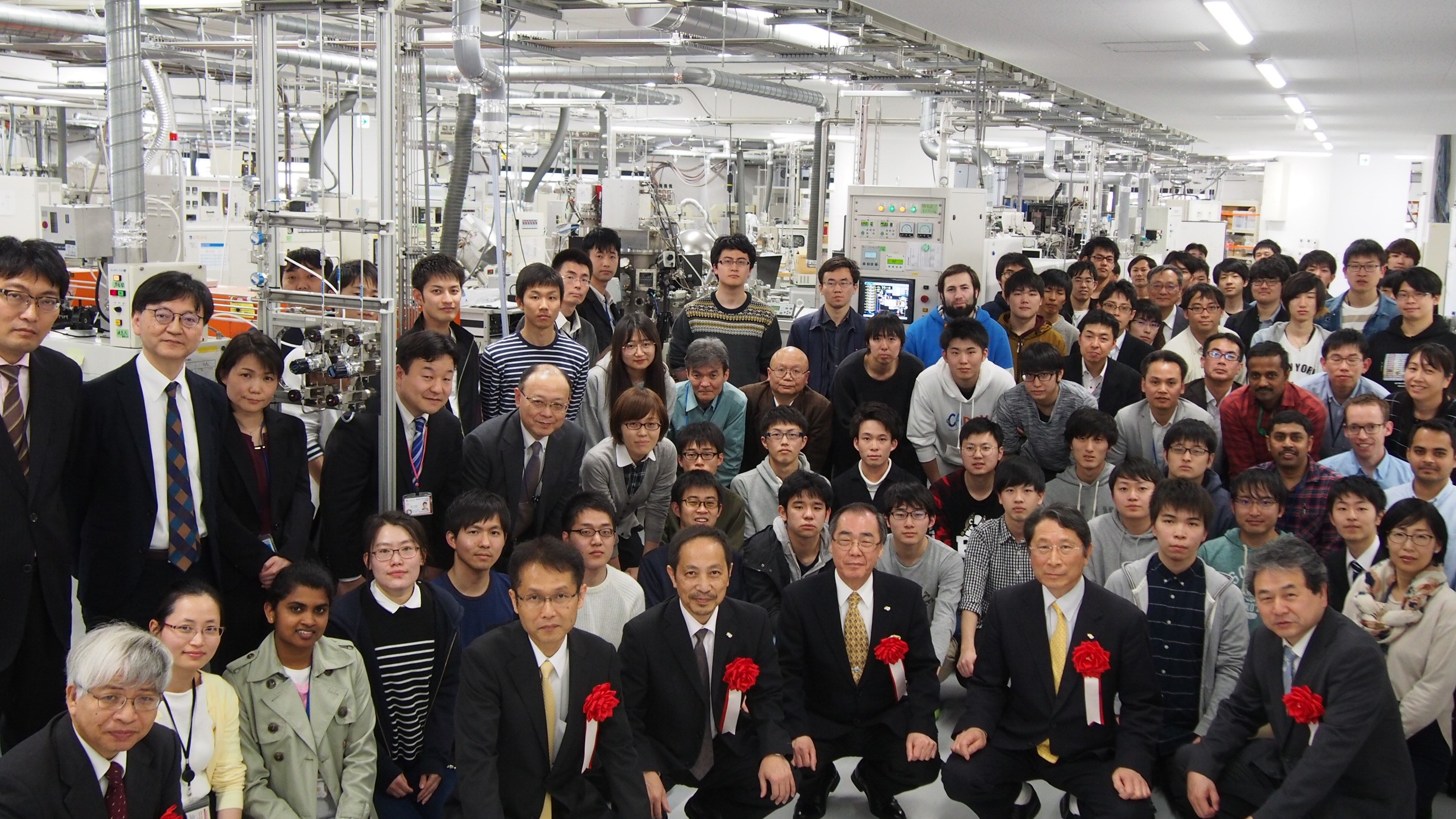
006
High resolution electron microscopy revealed atomic structure of defects in Mg doped GaN.
Atomic resolution structural analysis revealed that Mg impurity atoms (dopant) segregates at defects in GaN crystal and that the segregation determines the upper limits the free carrier density in p-type GaN. The results were reported in the journal, Appl. Phys. Express (vol 12, 031004 (2019)), and the article was selected as a spotlight article (editor-selected article).
This work was completed in collaboration with Toyota Central R&D Labs., Inc. and was supported by MEXT "Program for research and development of next-generation semiconductors to realize an energy-saving society."
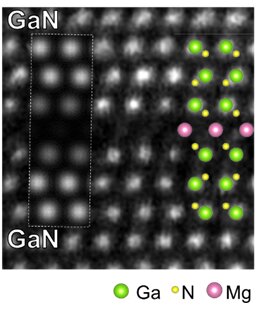
High resolution electron micrograph of a Mg segregated defect in GaN. Ga atoms are observed as bright spots. Mg atoms segregate at dark atomic layer sandwiched by GaN crystals. Inset shows simulated image of the Mg segregated defect structure.
005
Power Electronics Laboratory have achieved 19MHz switching operation using GaN MOS-FET.
Collaboration Project between Power Electronics Laboratory in Nagoya University and TOYODA GOSEI Co., Ltd. has achieved 19MHz switching operation using GaN MOS-FET which is vertical GaN power device. GaN MOS-FET can operate two times higher switching transient as compared with SiC MOS-FET. Using this technique, the wireless power transfer system can expand 10 times power transfer distance in EV, PC and mobile phone applications.
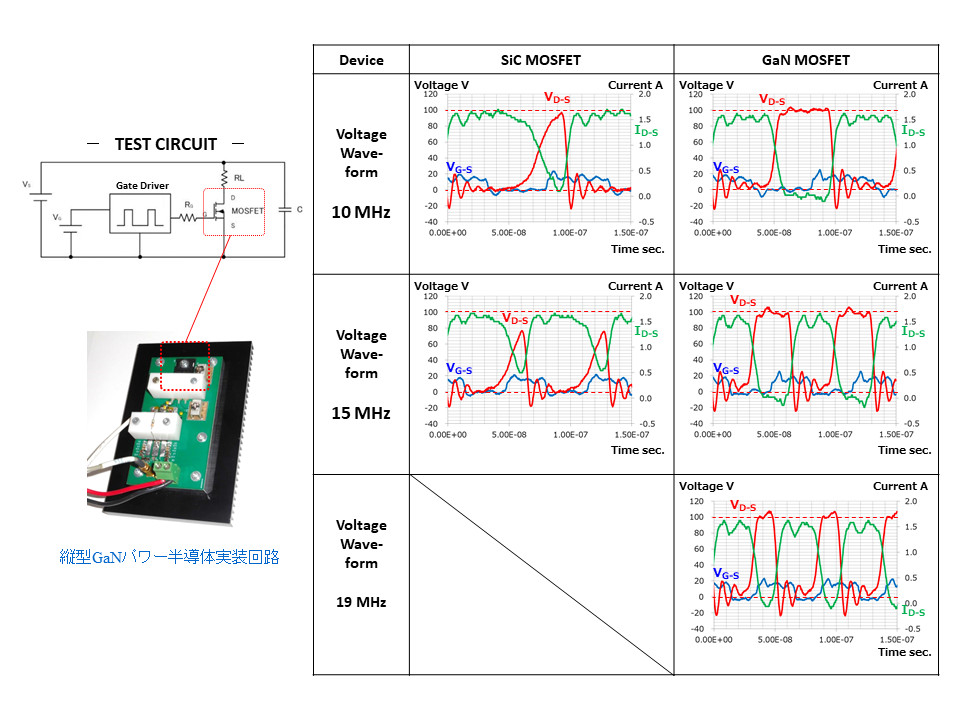
Figure (left) Power Conversion System applying GaN MOS-FET, (right) Comparative data of High Frequency Operation between GaN MOS-FET and SiC MOS-FET
004
Kazuo Shiokawa (Electrical Engineering) was elected as the SCOSTEP President
During the SCOSTEP General Council Meeting held in July 13, 2019 in Montreal, Canada, Prof. Kazuo Shiokawa (Electrical Engineering) was elected as the SCOSTEP President for the next four years. The SCOSTEP (The Scientific Committee on Solar Terrestrial Physics) is an interdisciplinary body of the International Council for Science (ICSU, currently ISC). SCOSTEP runs international interdisciplinary scientific programs and promotes solar-terrestrial physics research by providing the necessary scientific framework for international collaboration and dissemination of the derived scientific knowledge in collaboration with other ICSU bodies. SCOSTEP is a permanent observer at the United Nations Committee on the Peaceful Uses of Outer Space (UNCOPUOS).
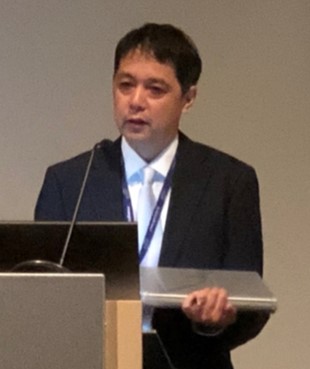
Prof. Kazuo Shiokawa at the inauguration statement.
003
Behavior Signal Processing Laboratory researches signal processing theory and creates new environment for human.
Behavior Signal Processing Laboratory researches signal processing theory such as machine learning methods, and develops application systems such as speech recognition, behavior understanding, autonomous driving, interaction, sports science and so on. We have realized a multi-modal communication enabled autonomous driving system that can operate the autonomous vehicle using voice, gesture and gaze.
Details are here

002
Researches on high-density memory and advanced sensor devices
At Iwata Laboratory of Department of Electronics, we have been developing the efficient way of the magnetization switching utilizing spin current, electric field, Joule heating, etc. Functional magneto-resistance sensor devices and nano-fabrication of the magnetic thin films for ultra high-density storage are also studied. These researches are quite important to transform society through the next-generation IoT (internet of Things).
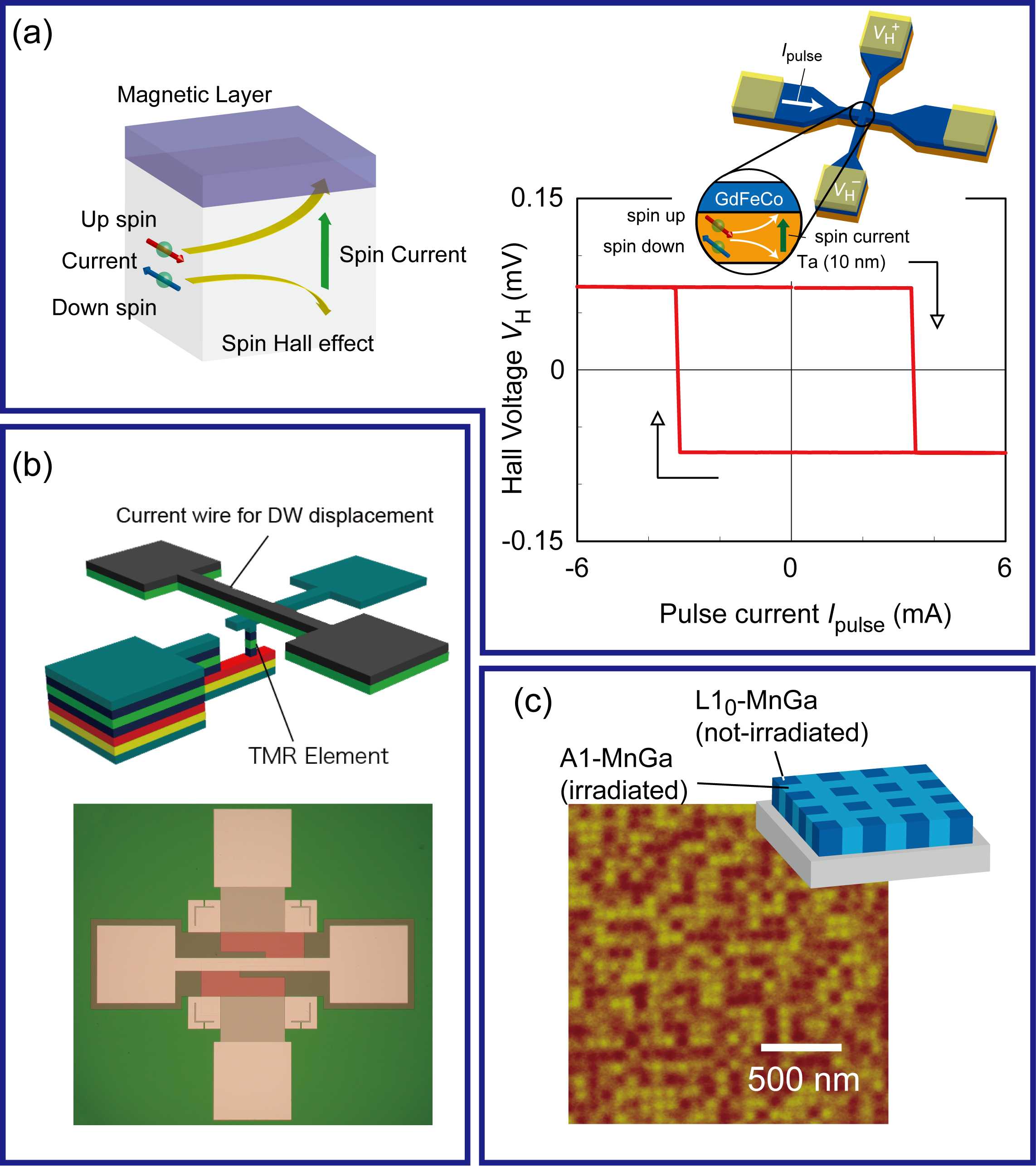
Figure
- (a)Schematic and experimental result on the magnetization switching of GdFeCo by spin Hall effect.
- (b)Schematic and optical microscope image of domain wall displacement type magneto-resistance sensor device.
- (c)Schematic and magnetic force microscope image of bit patterned medium fabricated by ion irradiation.
001
Research of space plasma with the data analysis of satellites and computer simulations
Miyoshi Laboratory (Space Information Engineering group) has studied various phenomena in solar atmosphere and geospace such as solar flares, aurora and high energy electron accelerations using the data from the cutting-edge satellites Arase and Hinode. Moreover, the laboratory has studied space plasma processes with supercomputers.
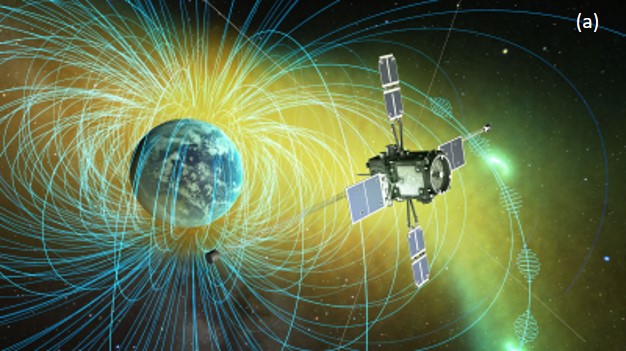
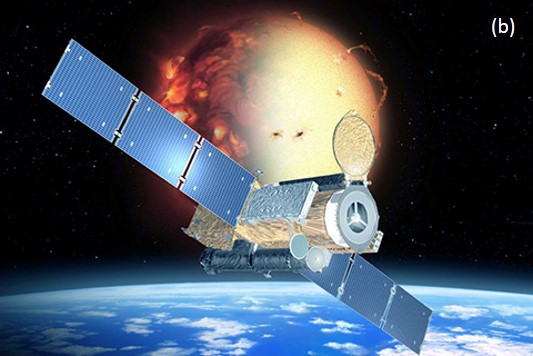
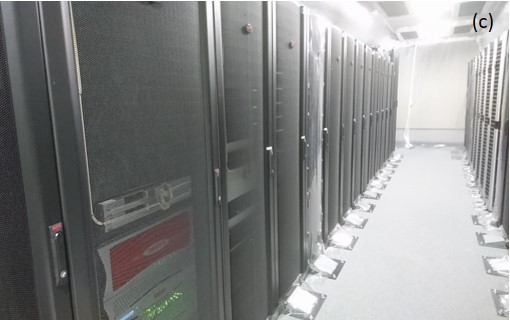
Caption (a) Geospace exploration satellite “Arase” (© ERG Science Team), (b) Solar satellite “Hinode” (© ISAS/JAXA), (c) The CIDAS supercomputer system at the Institute for Space-Earth Environmental Research.


